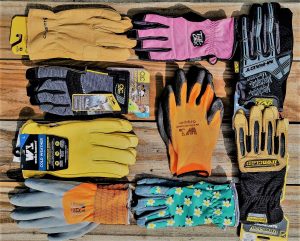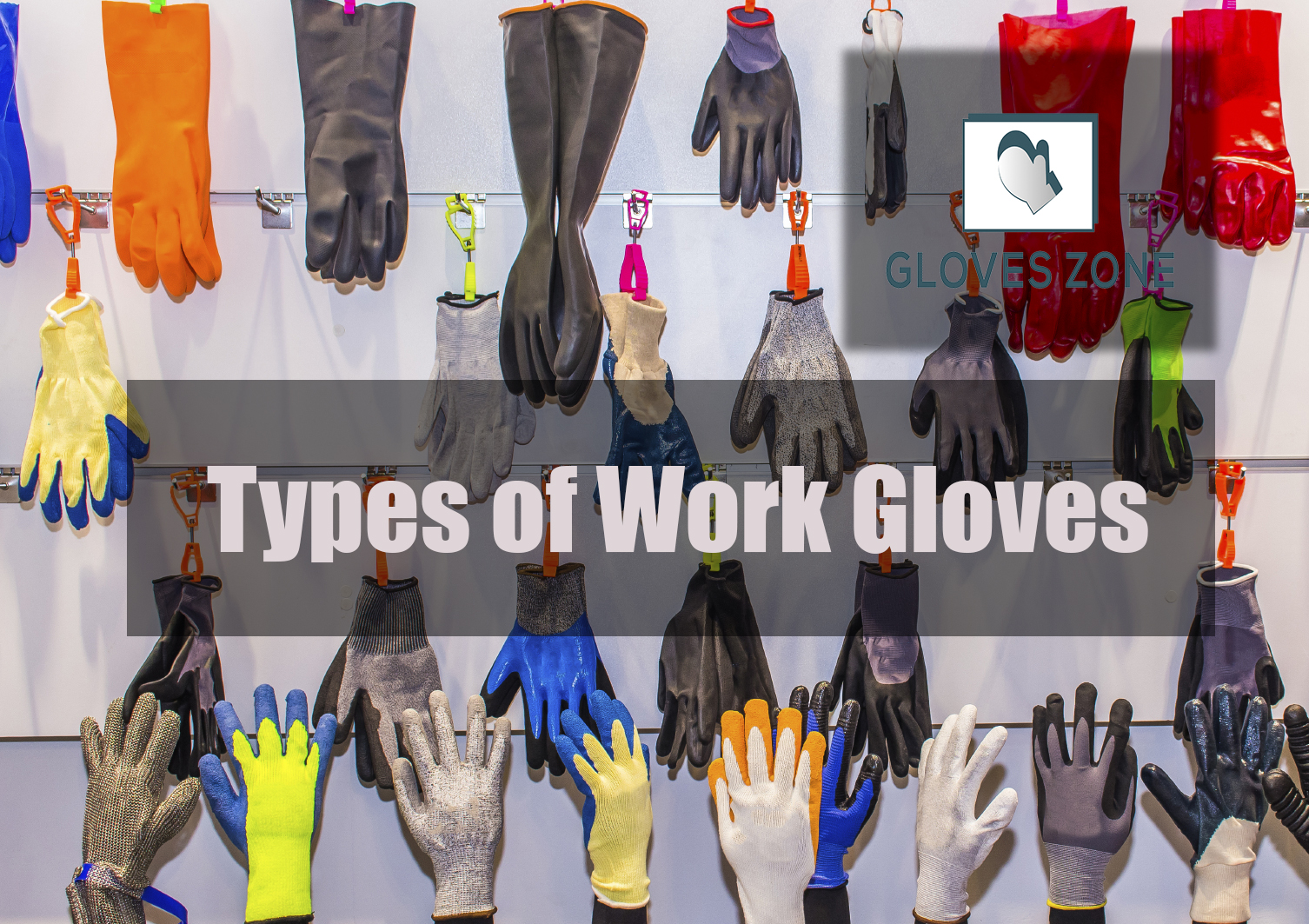Protective gloves are a must-have for workers in various industries, from construction to manufacturing to healthcare and beyond. In addition to shielding workers from harm, they also boost grip strength, dexterity, and productivity.
There are different types of work gloves on the market today, each optimized for different conditions. This page will discuss the many varieties of work gloves available, their materials, uses, and selection criteria.
Introduction
Work gloves are an essential part of maintaining a safe working environment. They shield and protect your hands from various dangers, including wounds, chemicals, heat, and injury. The correct type of work gloves can also boost productivity by enabling workers to complete their activities more comfortably, under more control, and with increased precision. Keep reading this article as we will go over the various kinds of available work gloves as well as the tasks that call for each one.
1. General Types of Work Gloves
Work gloves available in the market are mostly made of leather, fabric, and disposable gloves. They’ve become the three primary categories of work gloves.

- Disposable Gloves: These gloves are made from thin, lightweight materials like latex, vinyl, or nitrile. They are designed for single use and are commonly used in healthcare, food service, and laboratory settings.
- Leather Gloves: Leather gloves are made from cowhide, pigskin, or goatskin. They are durable and protect against abrasions, punctures, and heat. They are often used in the construction, welding, and metalworking industries.
- Fabric Gloves: Fabric gloves are made from woven or knit materials such as cotton, nylon, or Kevlar. They provide a comfortable fit and are commonly used in the manufacturing, assembly, and packaging industries.
2. Specialty Work Gloves
Work gloves made specifically for various-specific jobs and situations are known as specialty gloves. The work gloves listed below are some sub-types of specialty work gloves available in the market.

- Cut-Resistant Gloves: These gloves are built from materials such as Kevlar, Spectra, or Dyneema and are designed to withstand sharp objects. They offer protection against sharp items and are typically utilized in the construction, automotive, and glass industries.
- Chemical-Resistant Gloves: These gloves offer protection against freezing temperatures and are typically utilized in the fishing, meatpacking, and cold storage industries due to their widespread application. Therefore, Neoprene, nitrile, or PVC are typical components that go into the production of cold-resistant gloves.
- Heat-Resistant Gloves: These gloves are designed to withstand high temperatures. Therefore, they’re crafted from materials like leather, Kevlar, or Nomex. They offer protection from heat and are frequently utilized in the welding, foundry, and firefighting sectors, amongst other applications.
- Cold-Resistant Gloves: These gloves are made from materials like neoprene, nitrile, or PVC. They provide decent protection against cold temperatures and are commonly used in the fishing, meatpacking, and cold storage industries.
- Impact-Resistant Gloves: These gloves are designed to withstand the force of an impact. Therefore, some materials such as thermoplastic rubber or silicone are used to produce these gloves. Construction, oil and gas, and mining are some of the most popular industries in which you’ll find them in use since they offer protection against impact and vibration.
3. Disposable Gloves
Disposable gloves are designed to be used once and then discarded, reducing the risk of contamination and the spread of harmful bacteria and viruses. Special materials are used in manufacturing disposable gloves, and they now strike the market with various variants as well.

- Materials: Latex, vinyl, and nitrile are among the materials that are used in the production of disposable gloves. Other materials may also be used. Every material comes with its own set of benefits and drawbacks, such as the risk of developing latex allergies or nitrile’s resistance to certain chemicals.
- Types of Disposable Gloves: Different kinds of disposable gloves include those that are powdered, those that are powder-free, those that have a textured or smooth surface, those that are intended for medical examinations, and those that are used in industrial settings. These versions offer a unique combination of grip, comfort, and protection against potential hazards.
- Applications: Disposable gloves are frequently utilized in the medical field, laboratory, and in different scales of food industries. They help stop the spread of germs, shield food from contamination, and offer defense against potentially harmful substances.
4. Leather Gloves
Leather gloves were the first work gloves ever produced in mankind’s history. They’re made from animal skins and now come in a range of variations that refers to their specific variations.

- Materials: Cowhides, goatskins, and pigskins are the three most common types of leather used to craft leather gloves. Each type of material possesses a unique set of qualities, such as its capacity to withstand heat or its degree of pliability.
- Types of Leather Gloves: Leather gloves are available in various styles, including those designed specifically for driving, welding, and general use, among other activities. Each variety is tailored to perform a certain set of duties, such as driving, welding, or everyday use.
- Applications: Leather gloves offer a degree of protection against abrasions, punctures, and heat, among other potential hazards. Gloves made of leather fit comfortably and provide an increased hand grip. As a result, you’ll find widespread application for them in the industries of construction, welding, and metalworking.
5. Fabric Gloves
Fabric gloves are a type of work glove that can provide protection and comfort to the wearer. They come in various types, each designed to meet specific safety needs in different industries.

- Materials: Fabric gloves are made from woven or knit materials such as cotton, nylon, or even Kevlar. Each material has different properties, such as breathability, durability, or cut resistance.
- Types of Fabric Gloves: Fabric gloves can be knit or woven from various materials, including cotton, nylon, and even Kevlar. Different varieties excel in different areas, such as wearability, dexterity, breathability, and cut resilience.
- Applications: Fabric gloves are commonly used in manufacturing, assembly, and packaging industries. They offer a comfortable fit and improved grip, making it easier for workers to handle small or delicate/vulnerable items.
6. Cut-Resistant Gloves
These are work gloves that can resist cuts from sharp objects. Different materials are used and they come in different cut-resistant level and applications as well.

- Materials: Cut-resistant gloves are made from materials such as Kevlar, Spectra, or Dyneema. Each material provides different levels of cut resistance.
- Cut-Resistance Levels: Cut-resistant gloves are rated based on the level of protection they offer against cuts. The ratings range from A1 to A9, with A9 providing the highest level of protection.
- Applications: Cut-resistant gloves are commonly used in the automotive, construction, and glass industries. They provide protection against sharp objects and reduce the risk of cuts and lacerations.
7. Chemical-Resistant Gloves
Gloves with a chemical-resistant coating are important personal protective equipment that shields workers from potentially harmful substances or hazardous chemicals. Different types of chemical-resistant gloves are also available for different applications.

- Materials: Neoprene, nitrile, and polyvinyl chloride (PVC) are commonly used for making gloves that can withstand chemicals. There are a variety of chemical hazards, and various materials offer protection against them.
- Types of Chemical-Resistant Gloves: There are wide varieties of chemical-resistant gloves available, including neoprene, nitrile, and even PVC gloves. There are various benefits to choosing a certain kind, such as resistance to acids, bases, or even solvents.
- Applications: The pharmaceutical, petrochemical, and agricultural industries all benefit from and frequently use gloves with chemical resistance. They can prevent chemical burns and skin irritation by shielding the wearer from potentially harmful substances.
8. Heat-Resistant Gloves
As its name suggests, heat-resistant gloves refer to those work gloves that can withstand heat exposure. They come in different materials, variants, and applications as well.

- Materials: Leather, Kevlar, and Nomex are common materials that can be used to create these specialized heat-resistant gloves. However, there is a range of heat resistance from material to material, and some glove products may be made of a combination of those materials.
- Types of Heat-Resistant Gloves: There are a variety of heat-resistant gloves available, including those designed specifically for welding, foundry work, and firefighting. So you can find those “welding gloves”, “firefighting gloves”, or “Foundry work gloves” in the market. Many types have useful properties, such as safety against fire and sparks.
- Applications: Welders, firefighters, and others working with hot metals benefit from using heat-resistant gloves. In doing so, they prevent burns and other damage from being caused by excessive heat exposure to their hands.
9. Cold-Resistant Gloves
As opposed to heat-resistant gloves that give protection against heat, cold-resistant gloves protect your hands from cold temperature exposure. Different materials are used to manufacture these gloves, and various products are now available in the market for specific applications.

- Materials: Neoprene, nitrile, and PVC are some of the best materials used to produce cold-resistant gloves commercially. Like in heat-resistant gloves, there is a wide range of cold resistance between materials.
- Types of Cold-Resistant Gloves: Thermal gloves, cold storage gloves, and freezer gloves are some varieties of cold-resistant gloves available in the market. Advantages unique to each variety include resilience to extreme temperatures and humidity.
- Applications: Fishing, the meat processing industry, and cold storage facilities are some industries that benefit from cold-resistant gloves the most. These gloves prevent your hands from getting frostbite or hypothermia thanks to the cold temperature protection they provide.
10. Impact-Resistant Gloves
Impact-Resistant Gloves are designed to protect hands from impacts and reduce the risk of hand injuries. These gloves are made from materials with impact-resistant properties. Impact-resistant gloves come in various types with specific advantages. These gloves get applications in various industries as well.

- Materials: Thermoplastic rubber or silicone are typically the best materials used to manufacture impact-resistant gloves. The level of impact resistance provided by various materials varies and the combination of materials.
- Types of Impact-Resistant Gloves: These specialized gloves can be broken down into subcategories like heavy-duty gloves, anti-vibration gloves, and mechanic gloves, to name a few. There are many different kinds of gloves, each with its own benefits such as reducing vibration, protecting knuckles, or bettering grip.
- Applications: The automotive, construction and manufacturing sectors are regular users of impact-resistant gloves. You won’t have to worry about your hands getting hurt from possible impacts as much because of the protection they provide.
11. Choosing the Right Work Gloves
As you’ve seen above, there are various work gloves available in the market and most of them are attached to a specific range of usage. At this point, it’s vital to choose the right work gloves. When shopping for your work gloves, you need to pay attention to at least three things below.

- Factors to Consider When Choosing Work Gloves: When selecting work gloves, it is crucial to take into consideration a number of aspects, including the type of task, the level of protection needed for the job, as well as the comfort and fit of the gloves.
- Matching Gloves to the Task: Different jobs or tasks call for various kinds of gloves; it’s essential to select gloves that are suitable for the position you will be filling or the tasks you’ll be doing most of the time.
- Proper Fit and Sizing: Work gloves should have the correct fit and size to offer the wearer the highest possible level of protection and comfort. It is essential to determine the size of your hand and select gloves that are a comfortable fit without being overly constrictive. It’s highly advisable to use the size chart provided by the corresponding manufacturer.
12. Care and Maintenance of Work Gloves
When it comes to caring for and maintaining your work gloves, there are two major things you should pay attention to. These include:

- Cleaning and Storage: To keep their functionality and extend their lifespan, work gloves need to be washed on a regular basis. Regarding cleaning, leather gloves can be wiped down with a moist cloth, whilst fabric gloves can be put in the washing machine.
- Inspection and Replacement: Work gloves would be better if inspected regularly for any signs of wear and/or tear. On the other hand, worn-out gloves should be replaced as soon as possible. Gloves must be replaced as soon as possible if they get damaged or can no longer offer sufficient protection to your hands.
Conclusion
There are different types of work gloves available in the market, including disposable gloves, leather gloves, fabric gloves, cut-resistant gloves, chemical-resistant gloves, heat-resistant gloves, cold-resistant gloves, and impact-resistant gloves.
It is necessary to select the appropriate gloves for the task at hand to protect oneself from workplace hazards and limit the likelihood of sustaining hand injuries. It is essential for workers to put safety first by protecting their hands with the right kind of work gloves for the jobs/tasks they are performing.
Workers may guarantee that they are picking the appropriate gloves for the job and taking adequate care of work gloves to preserve the gloves’ performance and prolong their lifespan by following the suggestions in this article and using them as a guide.

I am not a good blogger but I started blogging when I was in my college. one day scrolling my social media pages and top of the page one notification was coming like this “ earn money from blogging”.then I clicked that notification. After that, I was confused that which niche is better for me. Finally, I selected the niche and I was comfortable with that glove’s reviewer.

